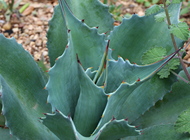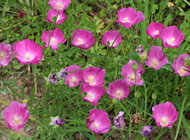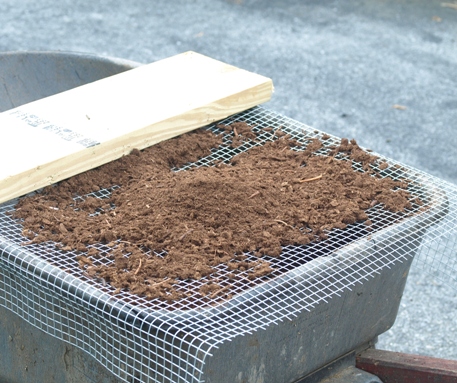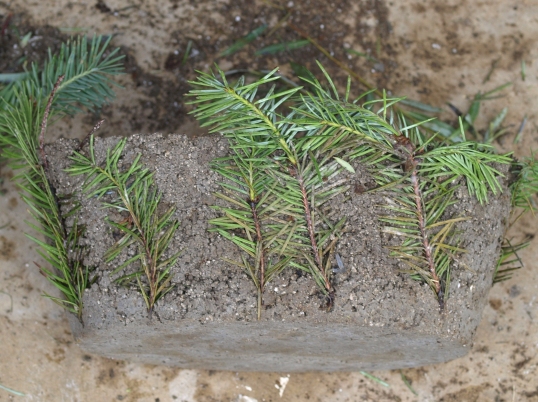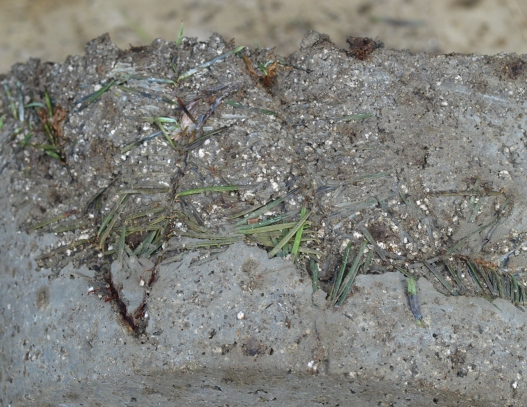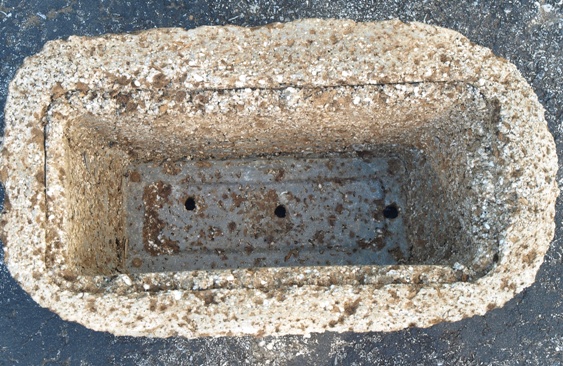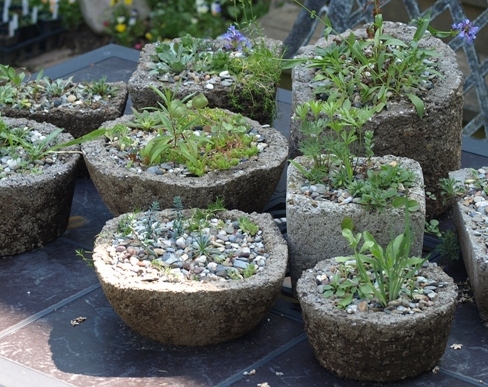
As I've become more interested in rock gardening, including tending to the diminutive plants that goes along with that corner of the gardening hobby, I have come to realize the need for container culture of these littluns. Until recently, I treated the rock garden plantlets just the same as any other perennials: I started them from seed in winter, hardened them off outdoors for a few weeks, and then stuck them into the orchard nursery area, where they'd have to fend for themselves through summer and winter. Sure, I prepared a special section of the nursery area with better-draining soil, and developed some rock mulching methods designed to provide cooler root zones and reduce the tendency for frost heaving. But still, I would lose a very large fraction of my plants every season: some in the heat of summer, some in the wet and cold of winter. After all was said and done, there were only a few survivors to actually go into the rock garden proper. There had to be a better way. Alpine gardeners have known of this better way for years (it just took me a while to catch up): grow these plants, many of which are prima donnas, in containers designed just for them. Containers can be moved around: the amount of sunlight can be tuned to the plants' needs by selecting more or less shady locations, and they can be protected from the vagaries of winter weather. Many of these plants can easily cope with the temperatures our zone 6 climate throws at them, but are none too pleased with the wet conditions and frost heaving that are also part of our Pennsylvania winters. I haven't made the leap of constructing an alpine house (I'll leave that to the truly dedicated rock gardeners), but I do have the option of moving containers into the garage for winter, or providing some kind of cover to prevent excess rainfall if they are left outside. I do know from experience that I'll need to protect the containers from ravenous mice in the garage - so some kind of mesh cage construction will be necessary. I'll work on that later this year. So what should I grow my prima donnas in? To be honest, I think many types of containers are perfectly fine, including plastic and terra cotta pots. But the container style of choice for many rock gardeners is the hypertufa trough, which not only provides a suitable environment (the porosity helps with drainage and root zone aeration, and the thick walls help keep the root zone a bit cooler in summer's heat), but also look the part. So after years of having hypertufa projects on my long-range to-do list, I finally took the plunge and gave it a try. I looked up various recipes and methods online (you can find some resources listed here, went out to purchase the ingredients (Portland cement, milled sphagnum peat moss, perlite, builders sand), made a separate run to the dollar store to obtain a selection of molds, and went to it. Using my wheelbarrow as a mixing bin, I tried different proportions of
the ingredients (some with, some without sand, and different ratios of
cement to peat) to see which would give the best properties. The verdict on
that is still out, since my troughs are still young, but I think I like the
recipes that add in some sand and use a little more cement best, since they
give a slightly stronger final product. Sculpting the containers turned
into a bit of a family project, with both kids and Amy having fun playing
around with the different molds, adding different materials to provide
textures to the exterior surfaces of the troughs, and putting the finishing
touches on the not-quite cured containers when they first came out of the
molds. After they had further aged for a few weeks, they were ready for
planting. 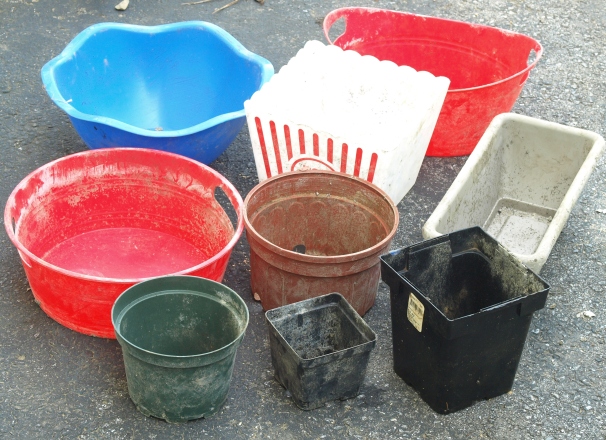 For the planting mix, I winged it even more than for the hypertufa recipe, combining compost, perlite, sand, and chicken grit to what seemed like a mixture with a suitable balance of moisture retention and drainage properties. I admit that I haven't yet attempted to taylor the medium to the needs of individual plants – perhaps one of these years I'll be ready to meet the needs of plants preferring calcareous soils, lean soils, or humus-rich soils. For now, they all have to deal with the random mixture I tossed together. So now I had lots of new containers, along with lots of seedlings, and a few second-year plants that had survived the nursery area through a full season. How to go about placing the plants into the containers? I'll readily admit: my process was largely random. My goal was to place a few seedlings of many varieties in troughs (the rest still go into the nursery area, to increase my chances that at least one method will yield success), and to have a variety of plants in each trough. So most containers have an interesting assortment of succulents, tiny xeric species, ground-hugging plants, and ones with a more upright habit. We'll see how it all develops – one advantage of container culture is the relative ease of moving things around. Once the plants were put in place, I finished things off with a layer of small pebbles, which should serve as a mulch to preserve moisture and prevent soil from being splashed up onto the plants' foliage during watering or rainstorms. Shortly after planting each of the containers, I took their pictures, so
that I could observe their progress through the season. Of course many of
the plants that die like clockwork in their first summer will do the same
thing in the pots as they always do in the open ground. But maybe a few
will find their alternative environment more to their liking, and stick
around for a while longer. For now, the troughs are arrayed on our patio
table, which provides some protection from roaming rodents and ducks. That's
probably not a long-term option (Amy may actually have other purposes for
that table), but it buys me some time to think about a proper solution. The
patio is nice in that it gets sun during the morning and early afternoon,
then gets some shade in the late afternoon and evening. If I were a plant,
that's just the conditions I'd like!
I welcome comments about my web pages; feel free to use the form below to leave feedback about this particular page. For the benefit of other visitors to these pages, I will list any relevant comments you leave, and if appropriate, I will update my page to correct mis-information. Note that I discard any comments including html markups, so please submit your comment as plain text. If you have a comment about the website as a whole, please leave it in my guestbook. If you have a question that needs a personal response, please e-mail me.
Last modified:
June 08, 2014 |
|||||||||||||||||||||||||||||||||
